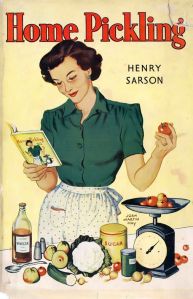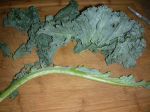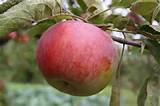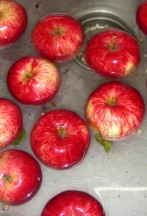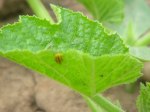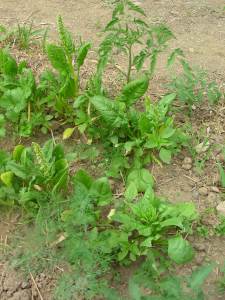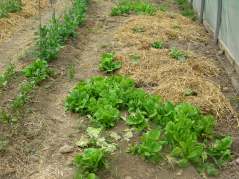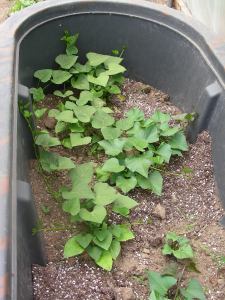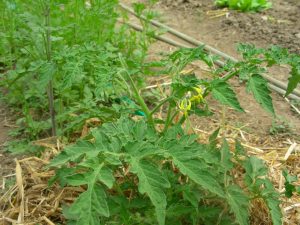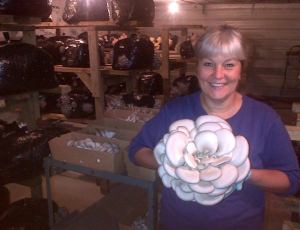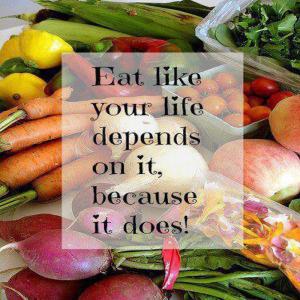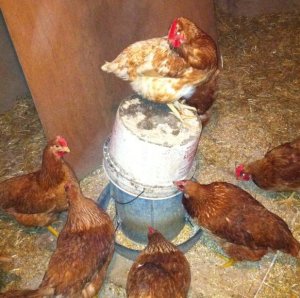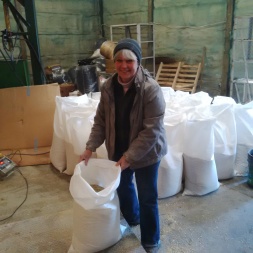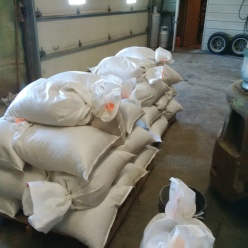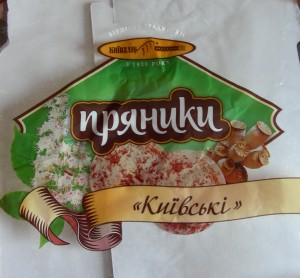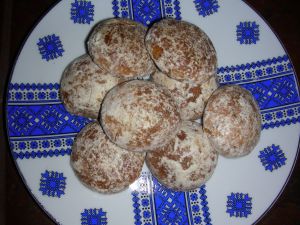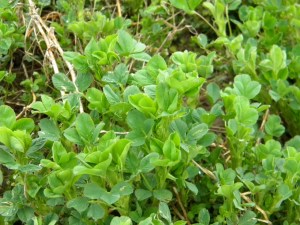Ralph and I attended an amazing event yesterday, which explored our relationship with our food system, including topics such as “Seed is Sacred”, “Soil as an Intelligence”, and “Beyond Pesticides”. (For a full list of the participants, click here.) The culmination of the evening was a keynote address by Dr. Vandana Shiva, a world-renowed author, scientist, and seed freedom activist. At the end of the evening, we both felt humbled to be in the presence of such committed food warriors. We became inspired to do even more ourselves, to ensure that we continue respecting all life, and to return to the soil, our Mother Earth, more than we take from it. (Nov.24: There is a link to a YouTube video of Dr.Shiva’s presentation at the bottom of this post.)

The information that we heard is too much for one post, so today I will try to encapsulate Vandana Shiva’s address first. In keeping with the theme of the festival, Dr. Shiva shared with us some “dangerous ideas” , that is, ideas that have the potential to make change.
1. We are at war with the Earth
Current conventional farming practices, especially biotech farming with genetically modified seeds and heavy use of pesticides, are treating insects and plants as “the enemy”. Weeds and insects are not enemies, they are part of a rich biodiversity. Some of the most dangerous chemicals used in farming were developed and used in warfare (DDT, Agent Orange). Biodiversity is not encouraged. These practices must end, we must stop being at war with the ecosystems.
2. Life is a web of life
A dangerous thought, indeed, that there is an interconnectedness with all things. One cannot do a harmful act without repercussions.
3. Earth is a living Earth
The farming “industry” today believes that earth is dead matter to be exploited. Fracking for small amounts of natural gas, squeezing oil from the tar sands, poisoning the soil and extracting as much as possible from it are all assaults on the earth. James Lovelock’s “Gaia Hypothesis” explains this further.
4. All life is sacred
“All species of plants and seeds are sacred and are not Monsanto’s inventions”. Vandana is continuously fighting for seed freedom through her organization, Navdanya.
5. Let us respect all life
By respecting ALL life, all plants, all seeds, all bacteria, all people, we acknowledge that there are no such things as “lesser” creatures. This kind of “dangerous” thinking would help eliminate racism, sexism, would acknowledge that all indigenous people are as “equal” and respected as those who come later.
6. The law of returns is sustainable and just
By obeying the laws of biodiversity, by giving more, we will get more food, more returns. GDP’s and GNP’s were created to take out wealth. We are only considered to be “productive”, if we are physically producing more than we take out, thereby encouraging a system of greedy extraction, without replenishing. These are not healthy systems, and are certainly not sustainable.
7. We need independent science
When there is almost no publicly funded science, or science research being conducted without funding from corporations who are looking for results favourable to their causes, we cannot call it sound science. Current science is completely ignoring the complexities of biodiversity, through a process Dr. Shiva calls “in-sensification”. This is not science.
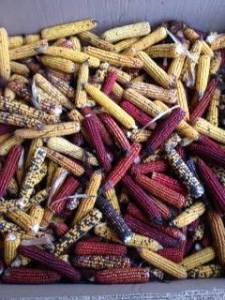
Ralph saves seed from his own beautiful open-pollinated corn each year.
8. Seed freedom must exist
To put a patent on seed, is to put a patent on life. When generations of farmers have been told that their practice of saving seeds is no longer allowed, and that they must purchase patented seeds, our seed freedom is being challenged (and violated). Bt cotton’s introduction to India, especially in the Punjab area, has taken its toll on the farm families, with hundreds of thousands of farmer suicides. The farmers have only GM cotton seeds available to them, which much be purchased every year at an incredibly high price. Previously, they had saved seeds, but are no longer able to continue this practice.
Seed libraries in Pennsylvania, Maryland and Los Angeles have been challenged and told that they are not allowed to store and exchange seeds. This is a real threat, and as someone who saves vegetable seeds every year, I will not take this threat lightly. One of my new initiatives will be to start a seed library in our own community library, with guidance from the Toronto Seed Library.
9. Corporations are NOT persons
The biotech seed companies are fighting seed saving programs with the argument that these programs are causing suffering to these corporations. They cannot claim individual suffering because a multinational corporation is NOT a person!
10. The ability to influence decisions is NOT free speech
By forcing farmers and nations to accept the technology of the biotech companies, they are removing any democratic right of these farmers to choose how and what they want to farm. This is a particularly dangerous idea, as more and more people realize how much corrupt lobbying and boardroom negotiations are bullying and shaping the current agricultural landscape. Freedom of speech is being denied.
And lastly, my favourite dangerous idea was
11. We must celebrate our lives and freedoms
We need to wake up, to acknowledge our current freedoms, appreciate what we have. Vandana suggested that on Earth Day, instead of just turning off the lights for an hour, we do even more. Plant some seeds, share them with your friends, and continue this celebration for weeks, for months. We need to focus on the positive, on the power we have to create and support a rich, biodiverse Earth that can, in turn, support us. We need to do this with joy.
These have been but brief encapsulations of Dr. Shiva’s presentation. Click here for a YouTube video of it (part 2 here), courtesy of the organizers of the event.
Please look through the links I have provided and learn more about the topics that speak to you.

Vandana Shiva, Nathan Carey, Rachel Parent
Nathan Carey, a farmer who spoke after Dr. Shiva, suggested that we all “enact our values”, which for most are peace and happiness. Money and power are merely tools (for some) to achieve that peace and happiness. “We need to be humans in an inter-relationship with the Earth”. My approach to living, to farming, and recently my Reiki path have made me mindful of my relationship with our beautiful Earth, but Nathan has encouraged all of us to find a “fit” for our particular gifts, that we can “flex the muscles” that carry us forward into a life of “interbeing”, as he puts it. It is not enough to be inspired and sit in quiet contemplation of all these ideas. The time has come to take action, to become an activist. I’m going to start with a seed library for our community. What will you do?
In my next post, I will share insights from the festival’s other speakers. I hope I’ve giving you some food for thought and welcome your comments and questions.
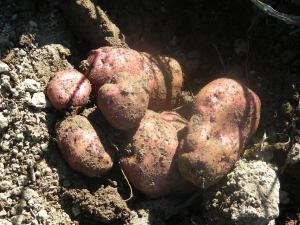 (This is a blog I wrote for Stacey Fokas’ Freshalicious website)
(This is a blog I wrote for Stacey Fokas’ Freshalicious website)


